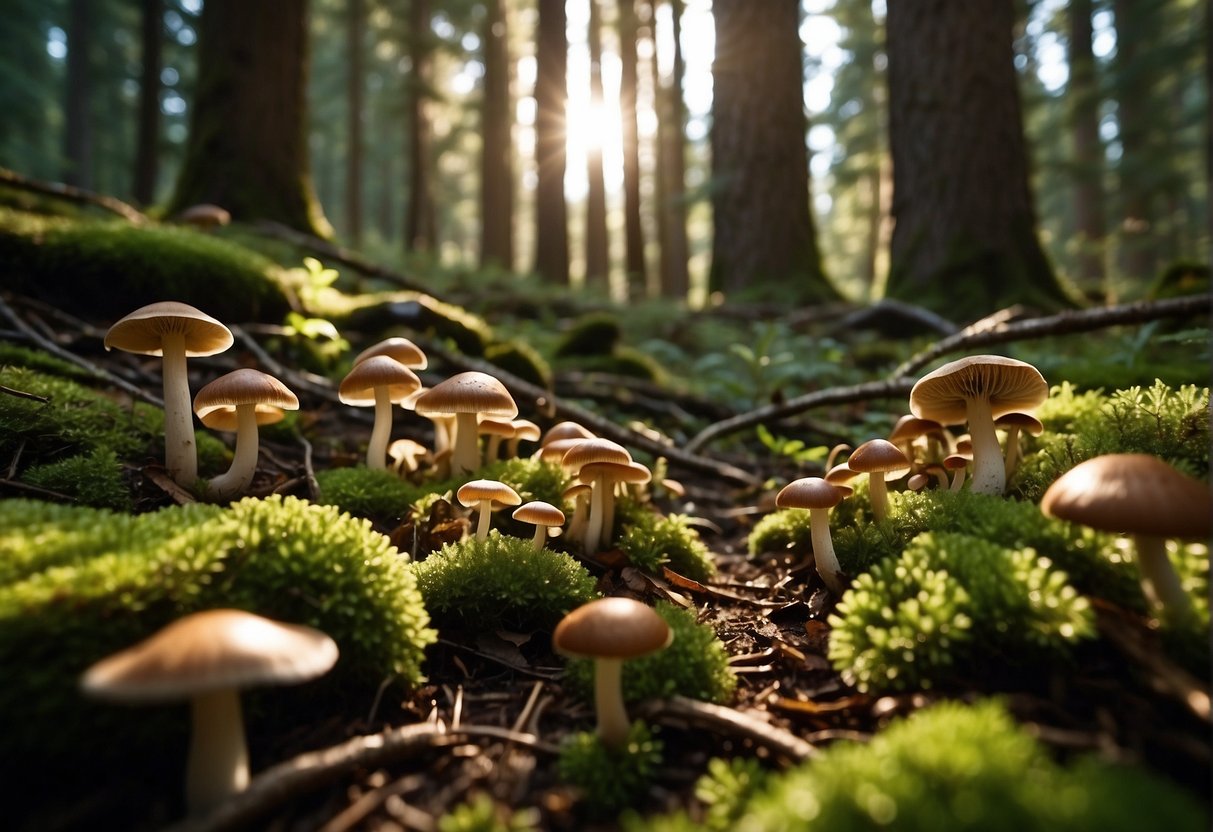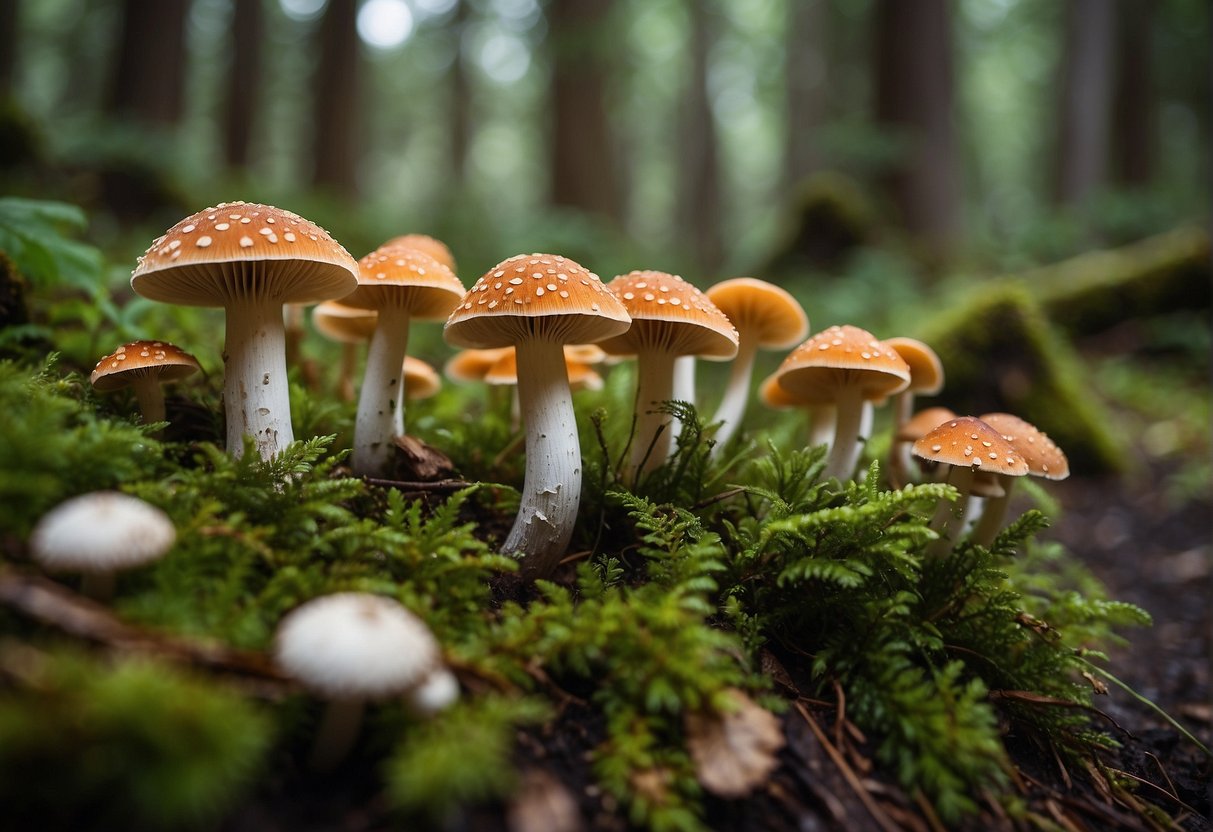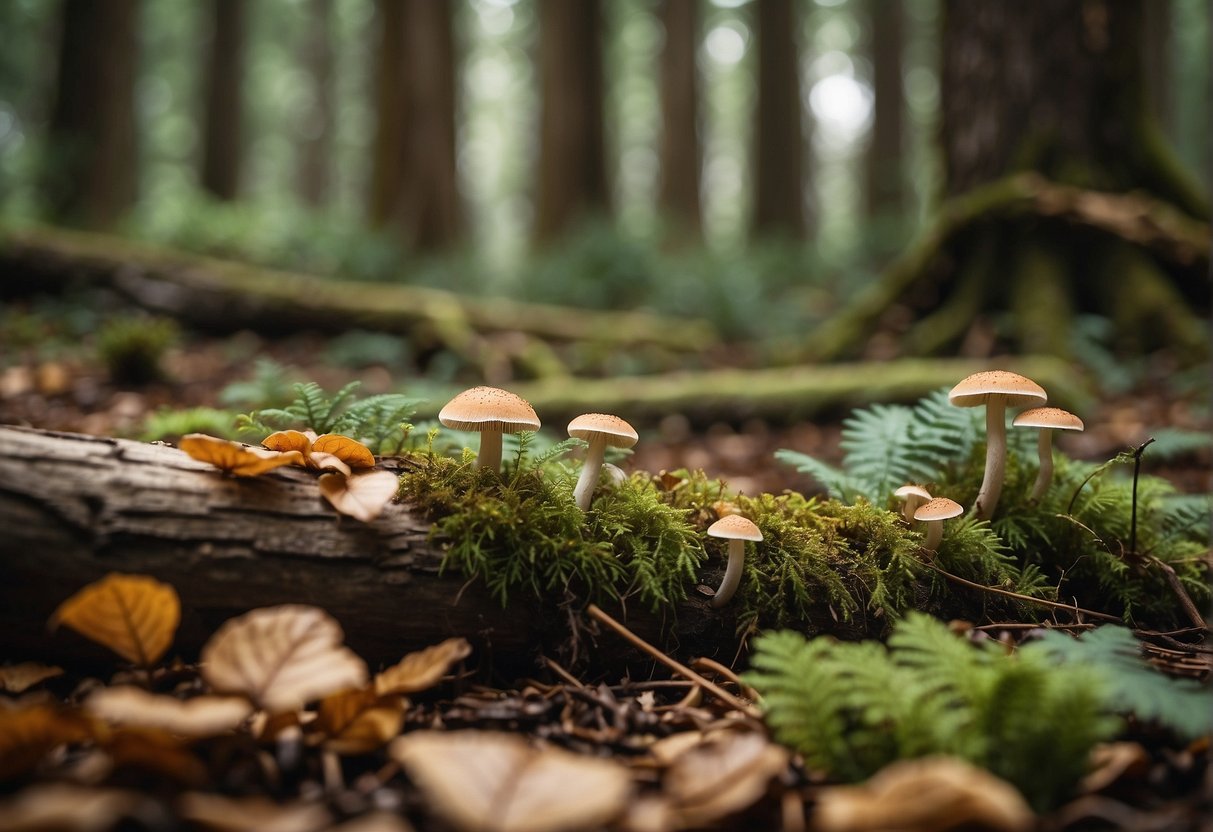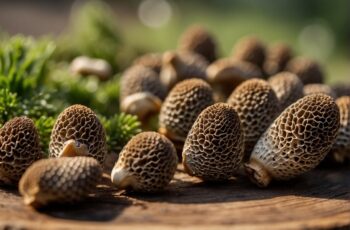In the lush landscapes of Washington State, foraging for edible mushrooms is a treasured pastime that unites nature enthusiasts and culinary adventurers alike. As you step into the verdant woods of the Pacific Northwest, a myriad of fungi await, offering both a connection to the earth and a delicious reward for your efforts. Whether you’re a seasoned forager or just starting out, knowing which mushrooms are safe to eat is essential, as the region is home to a diverse selection of both edible and inedible species.

Your journey through the forested areas of Washington might lead you to stumble upon the prized morels, the sought-after chanterelles, or the delightful oyster mushrooms, each with their own unique flavor profiles and cooking possibilities. It is crucial, however, to approach mushroom foraging with safety as your guiding principle. Accurate identification, awareness of look-alikes, and adherence to sustainable harvesting practices will ensure your foraging experience is both enjoyable and responsible.
Venturing into the woods with the right knowledge and respect for nature, you can enrich your culinary repertoire with nutritious and flavorful mushrooms straight from their natural habitat. Remember, the forests of Washington State are a forager’s haven, but they demand a keen eye and an informed approach. Happy foraging, and may your basket be bountiful with the safe and savory fungi of the Pacific Northwest.
Identifying Edible and Poisonous Mushrooms
When foraging for mushrooms in Washington State, it’s crucial to distinguish between safe, edible mushrooms and potentially deadly look-alikes. Your safety hinges on accurate identification and adherence to foraging guidelines.
Distinguishing Edible Species
Edible mushrooms in Washington State include prized varieties like chanterelles, morels, and oyster mushrooms. Each edible species has distinct features:
- Chanterelles: golden-yellow with wavy edges and flesh that smells faintly of apricots.
- Morels: honeycomb pattern with a conical shape; always ensure they are true morels, not their toxic twins.
Always positively identify every mushroom you plan to consume. This includes noting habitat and physical characteristics like cap, stem, and gill structure.
Harmful Look-Alikes
Exercise extreme caution as some edible mushrooms have poisonous look-alikes:
- Deadly Galerina can be mistaken for edible little brown mushrooms.
- Deathcap and Smith’s Amanita are toxic and can resemble edible fungi in colour and shape.
- False Morels contain a compound that is harmful if ingested and can be confused with true morels.
For every mushroom, consider the rule: when in doubt, throw it out. It’s better to miss out on a meal than to risk your health.
Utilizing Identification Tools
Leverage the following tools to aid accurate identification:
- Field guides: Carry a field guide specific to Pacific Northwest fungi for reference.
- Spore prints: Take a spore print to establish the color, which helps narrow down species.
- Identification apps: Apps can offer immediate assistance in the field but should not replace expert confirmation.
Remember, no app or guide is foolproof. When possible, consult with local mycological societies or experts in the field. Your safety is paramount, and proper identification is the cornerstone of responsible mushroom foraging.
Best Practices for Mushroom Foraging

Embarking on the search for wild mushrooms is a satisfying pursuit, but knowing the correct techniques and respecting both safety and legality is paramount to ensure a fruitful and responsible hunt.
Harvesting Techniques
When you’re out in the field, your harvesting technique is crucial for both preserving mushroom habitats and ensuring the future growth of fungi. Use a quality knife to cut the mushroom; do not pull it out. This method prevents damage to the underground fungal network essential for regrowth. Try to harvest small quantities to avoid overpicking and ensure that other foragers can also enjoy the activity. Aim to pick mushrooms that are just ripe, avoiding over-ripe or damaged specimens, as these might not be the best for consumption.
-
Do:
- Cut at the stem base.
- Gently brush off any soil or debris.
-
Don’t:
- Disturb the surrounding area more than necessary.
- Overharvest, as it can deplete resources.
Safety and Legal Considerations
Your safety when mushroom hunting is vital. Always go with an expert or learn from guides like those from the Puget Sound Mycological Society to accurately identify edible species—some mushrooms can kill if ingested. Steer clear of contaminated areas, such as roadsides or industrial zones, where mushrooms may accumulate toxins. Regarding legality, forage only where it’s allowed; some areas may require a permit, especially if you plan to harvest in large amounts. Always leave the environment as you found it to protect the natural foraging grounds and their ecosystems.
- Safety Checklist:
- Confirm mushroom identification with an authority.
- Carry a first aid kit.
- Tell someone your foraging location and return time.
- Legal Tips:
- Secure a foraging permit if required.
- Respect private properties and protected areas.
- Follow regional guidelines for sustainable foraging.
Popular Edible Mushrooms in Washington
In Washington State, you’re in prime territory for some of the most sought-after wild mushrooms across the country. Whether you’re a seasoned mycophile or a newcomer to the world of foraging, there’s something here for every level of interest and expertise.
Seasonal Mushroom Varieties
Spring:
- Morels: Particularly thick-stemmed and landscape varieties.
- Oyster Mushrooms: Look for these growing on dead or dying trees.
Summer:
- Chanterelles: The beloved Pacific Golden Chanterelle is a gem of the summer forest.
- King Bolete: Also known as Porcini, start looking from late summer.
Fall:
- Matsutake: A pine mushroom highly valued in Japanese cuisine.
- Lobster Mushroom: Known for its striking color and seafood-like flavor.
Winter:
- Although less bountiful, hardy mushrooms like the Velvet Foot can sometimes be found.
Culinary Favorites
- Chanterelles: With a subtle, peppery flavor, they’re excellent in sauces.
- Morels: Their honeycomb structure is perfect for absorbing flavors in a dish.
- King Bolete (Porcini): Sought after for their nutty flavor; superb in risottos.
- Chicken of the Woods: Often used as a meat substitute because of its texture.
- Hedgehogs: Their sweet, nutty taste makes a great addition to any mushroom mix.
- Lobster Mushroom: Its seafood-like aroma is unique and highly desired.
- Puffballs: Ensure they are white inside before you use them, as they become inedible when mature.
- Western Cauliflower: Similar to the Hen of the Woods, they add a hearty dimension to dishes.
- Sweet Tooth (Hydnum repandum): Small and delicate, adding a mild sweetness to your meals.
- Milk Cap: Keep in mind, some are edible while others are not – distinguishing knowledge is key!
- Oyster Mushrooms: Perfect for stir-frying, they have a velvety texture and mild flavor.
When hunting for these culinary treasures, safety is paramount. Always confirm the identity of the mushrooms with reliable resources like the Northern Bushcraft guide or seek knowledge from experienced foragers. Your foray into Washington’s wild edible mushrooms promises an enriching outdoor adventure and a bounty of nature’s finest.
Conservation and Ecosystem Impact

In Washington State, the interplay between fungi and local ecosystems underscores the intricacies of conservation. Recognizing how these organisms contribute to and are affected by ecological changes is essential for your deeper appreciation and responsible engagement with the region’s natural splendors.
Coniferous Forests and Fungi
Washington and the broader Pacific Northwest, including regions like Oregon and British Columbia, are renowned for their vast coniferous forests. Within these forests, fungi play pivotal roles; they form symbiotic relationships with tree roots, collectively known as mycelium, enhancing nutrient uptake. Mushrooms of Washington State, notably in coniferous environments, exhibit an array of medicinal properties and contribute to the diversity of the forest floor. Fungal species act both as decomposers and as partners in life with trees, showcasing a delicate balance that warrants careful research and cultivation efforts.
Fungi in the Ecosystem
Fungi are essential for a healthy ecosystem, serving as nature’s recyclers by breaking down organic matter and returning nutrients to the soil. They are more than just a food source or a decomposer; they create vast networks that nurture plant life. The mycelium underfoot connects plants and trees, orchestrating a complex exchange of nutrients and information. It’s important to understand that, while some fungi are parasitic, most play a beneficial role. These interactions are critical to maintaining the biodiversity you see across the Pacific Northwest, from the rainforests of Alaska to the woodlands of the Pacific Northwest.
Responsible Cultivation
As you wander through Washington’s wooded domains, know that responsible cultivation of wild edible mushrooms is integral to sustaining this treasure trove of mycological wonder. Mycological societies and dedicated foragers advocate for sustainable harvest techniques. By respecting growth cycles and habitats, and by avoiding overharvesting, you ensure that future generations may also enjoy the diversity of fungi. Learning from local experts and community-led initiatives can inform your practices, preserving both the species and their ecosystem impact.


